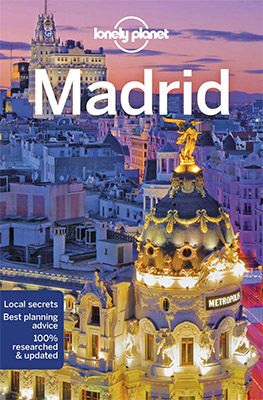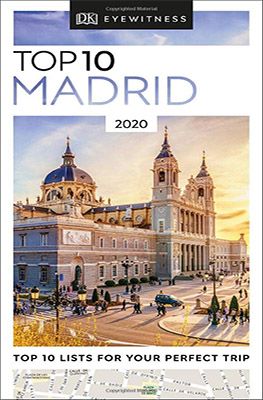A city trip to Madrid, unexpectedly special!
When you visit a city in Spain, everyone immediately thinks of Barcelona. However, a city trip to Madrid is definitely worth it! Madrid is the beating, economic and political heart of Spain. The metropolis in central Spain has over 6 million inhabitants. Despite this number and the enormous traffic network in and around the city, Madrid has a compact and cosy city centre. In addition, Madrid has nice authentic neighbourhoods where it is lovely to walk around. That’s why we can highly recommend a city trip to Madrid.
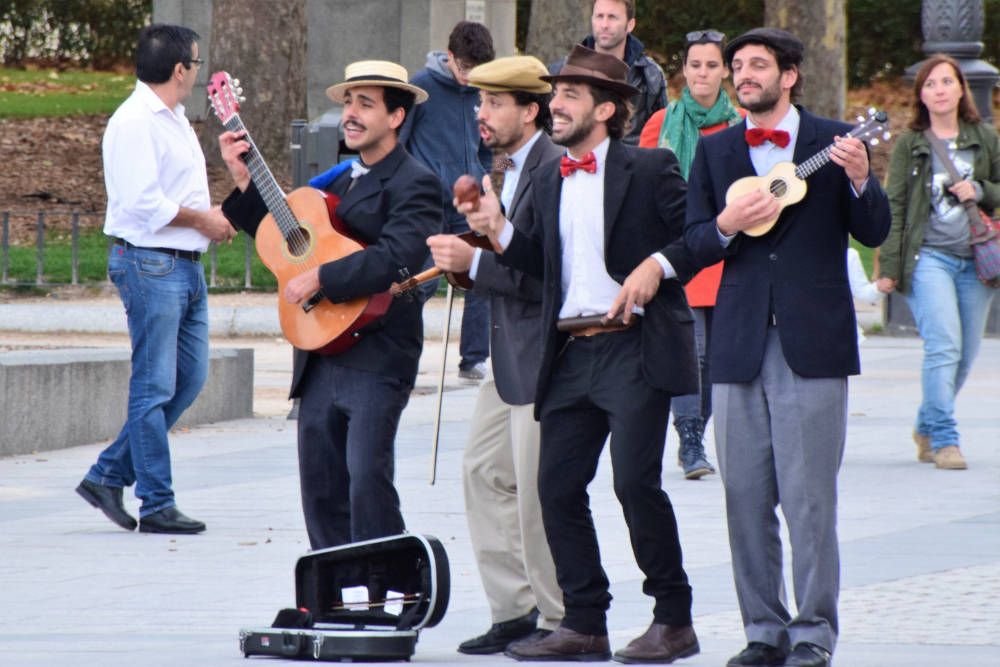
History of Madrid
In the 9th century, Spain was largely owned by the Moors. They built a palace on the spot where nowadays the Palacio Real stands. What is striking about Madrid is that the Romans left the region behind at the time. The city had no port and was not on important trade routes. That’s why you won’t find any remains from those rulers in Madrid.
The city received the official city rights in the year 1123. In 1561, the Spanish court of justice was established in Madrid, making it the unofficial capital of Spain. Until that time, Seville had been the most powerful city in the country but from then on, Madrid ruled Seville.
Let’s make a giant leap in time. In 1936 the Spanish Civil War broke out. Madrid was one of the hardest hit cities during this time. Madrid was the first city in history to be bombed by planes with the aim of hitting civilians. After the end of the Civil War in 1939, Madrid, like the rest of Spain, suffered under the dictatorial regime of General Franco. After his death in 1970, and the return to the monarchy several years later, the resurrection of the city began. Madrid became the economic, political, industrial and cultural centre of the country.
In March 2004, Madrid was hit by a terrorist attack, when several train bombs exploded during the morning rush hour near the Atocha train station. Almost 200 people were killed and 1700 injured. This was the largest attack on innocent civilians in the city since the end of the Spanish Civil War.
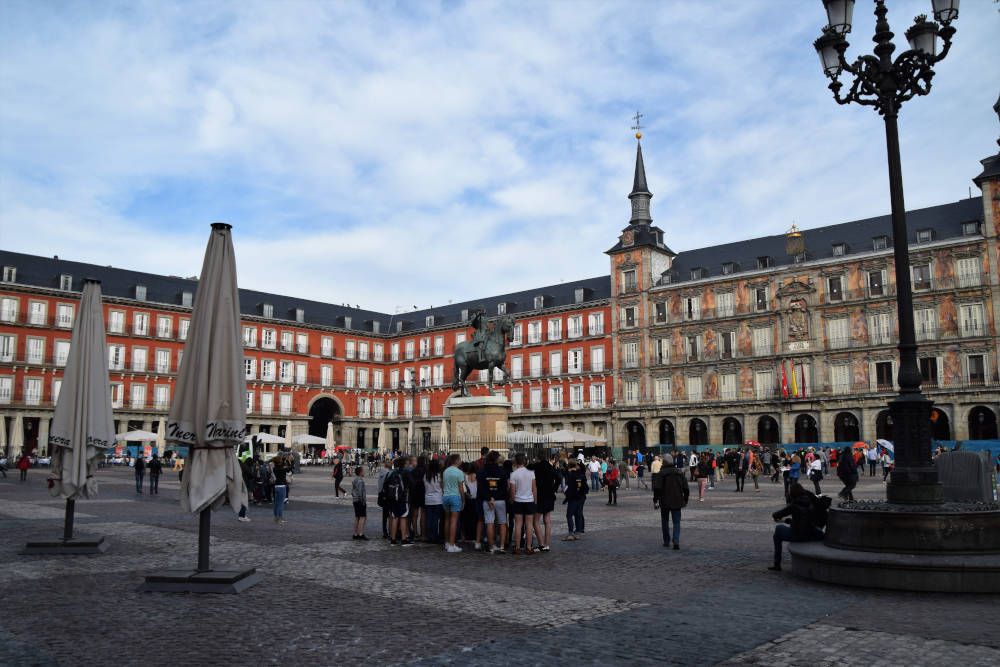
The highlights of a city trip to Madrid
Plaza Mayor
The most famous square of the city is Plaza Mayor, near the main street Calle Mayor. It is a beautiful rectangular square. The buildings around the square are equally beautiful, with their graceful balconies, towers, dormers and slate pointed roofs.
The square was the setting for many great events over the centuries. At the time of the Spanish Inquisition, public interrogations and executions took place here. The patron saint of the city, Isidorus, was canonised. And of course, the square used to be the setting for numerous bullfights.
In the middle of the square stands an equestrian statue of Philip III. An antiques market takes place every Sunday in Plaza Mayor. The entire square is surrounded by numerous terraces where tourists eat and drink.
Mercado de San Miguel
Just a few minutes’ walk from Plaza Mayor you will find the San Miguel covered market. In a beautiful building with wrought iron pillars are numerous tapas bars and other food stalls. It used to be a real food and household goods market. Now you will find plenty of places to eat tapas with cava. But also, other world cuisines can be found in the market hall. There is a special market for sushi.
Although it is a hotspot for tourists, the Madrileños also like to come to the market hall. At the end of their working day they like to have a drink together here. And when we walked through it around midnight on our way to our apartment on the Calle Mayor, it was almost only the inhabitants of the city who were eating and drinking here.
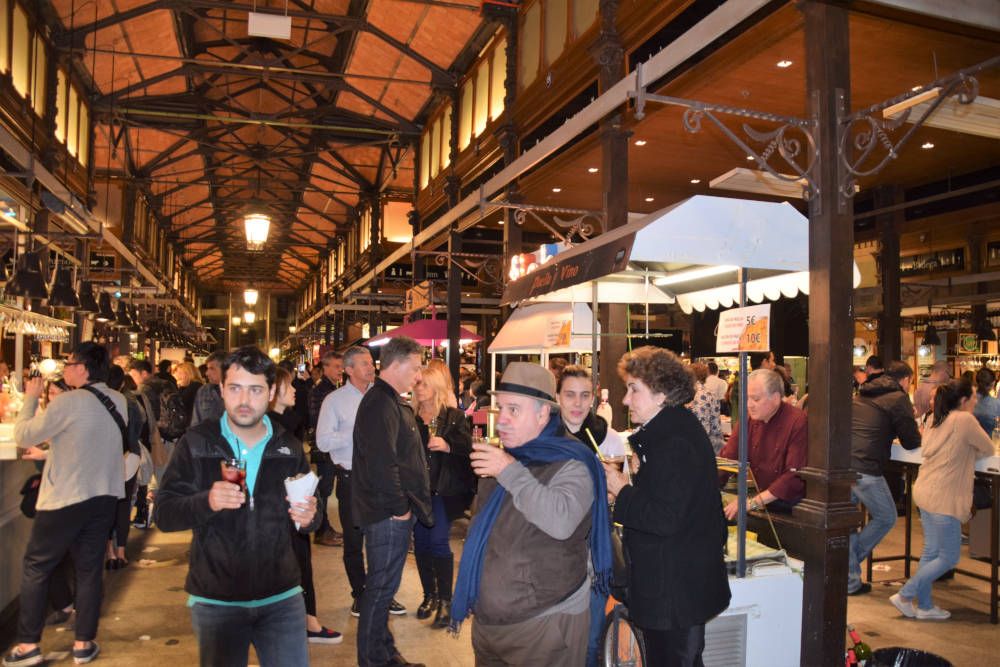
Palacio de Real, The Royal Palace
The Royal Palace was built in the 18th century by order of King Philip V. It was once home to a royal fortress. The decor of the entire palace is lavish, the decorations are numerous and sometimes almost flashy. It is the largest Royal Palace that you can admire in Europe.
A guided tour of the salutary decorated palace is definitely worthwhile. In our opinion, the highlights of the visit are the Throne Room, The Dining Room, the Gasparini Rooms and the Porcelain Room. You will get a good idea of the grandeur in which the princes of the time lived and enjoy the many marble and all the decorations in the various rooms of the palace. The gardens around the palace are also beautiful to walk through.
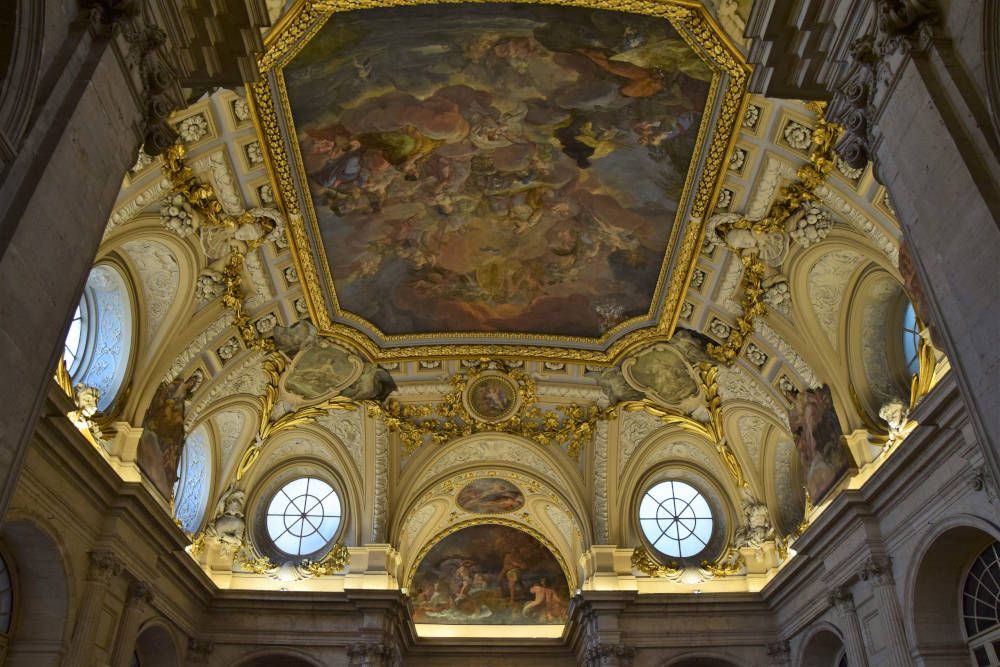
Parque el Retiro, Madrid City Park
The green heart of Madrid can be found in Parque el Retiro. The park was owned in the 17th century by King Philip IV, who even had a palace here. The Royal Family used the park for spectacles, bullfights and imitating complete naval battles.
Now the park is a resting place for the Madrileños to escape from the busy city. It is a wonderful walking and cycling area. Active people go jogging here or rent a rowing boat on the large lake in the park. On the shore of the lake is a colonnade with a large statue of Alfonso XII.
In the park you find the Palacio de Cristal. A palace made of glass and metal. You can visit it and enjoy the art exhibitions that take place here. You can also visit the Palacio de Velázquez in the park. The neoclassical building, built in red brick and decorated with ceramics, serves as an exhibition space for mainly industrial applications.
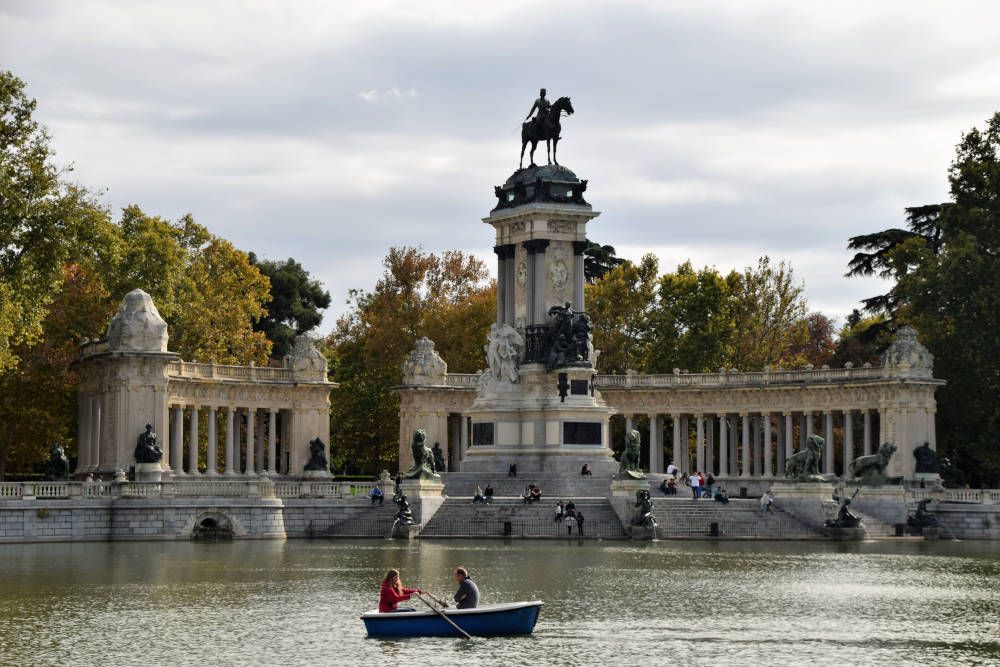
Estadio Santiago Bernabéu, the home of Real Madrid
It’s not just fun for football fans to visit this stadium of one of the richest and most successful football clubs in the world. Standing on the edge of the pitch, you’ll really notice how impressive this stadium is and how close the steep stands along the pitch rise.
In the museum, the stadium tour shows you the impressive and many trophies that the club has won over time. You’ll marvel at the size and luxury of the dressing rooms and of course see the club’s historical highlights on video screens.
The stadium is almost always open. It is wise to book tickets for a visit to the Bernabéu stadium online in advance, because there are often long queues at the ticket offices. Last year, more than 1.3 million people visited this place!
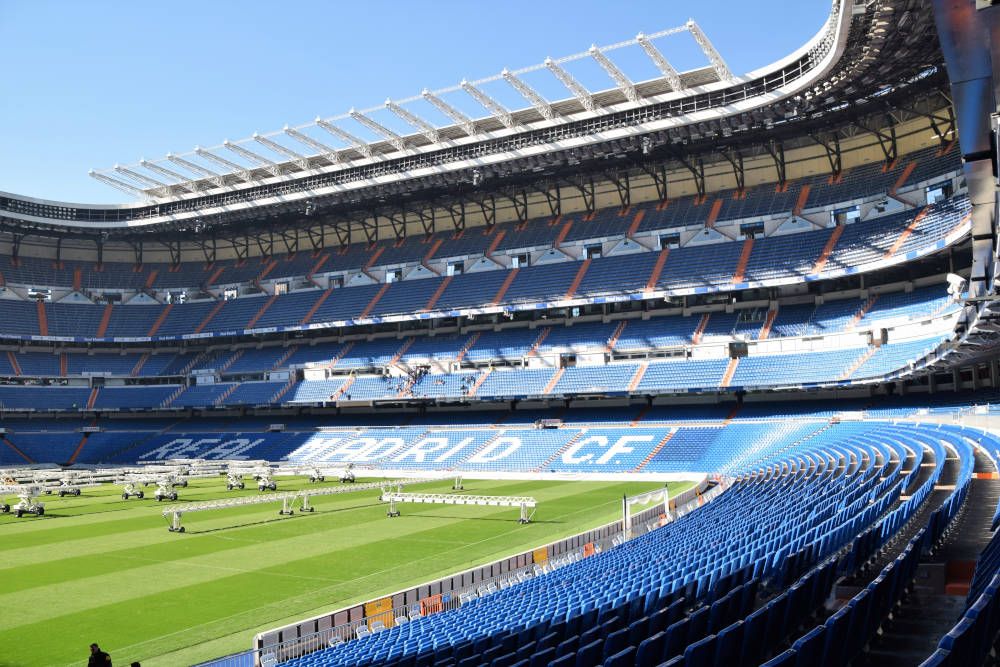
Templo del Debod
It is strange to be able to admire a large Egyptian work of art in Madrid. The Temple of Debod was built in Egypt in the 4th century BC. During the construction of the Aswandam in the Nile, the area was flooded. Spanish engineers helped save the monument and as a token of thanks Egypt therefore donated the temple to Spain.
The temple is aligned with two gates, surrounded by water. Especially at sunset the view is amazingly beautiful. By the reflection of gates and temple in the water you get a beautiful image. From the area you have a beautiful view.
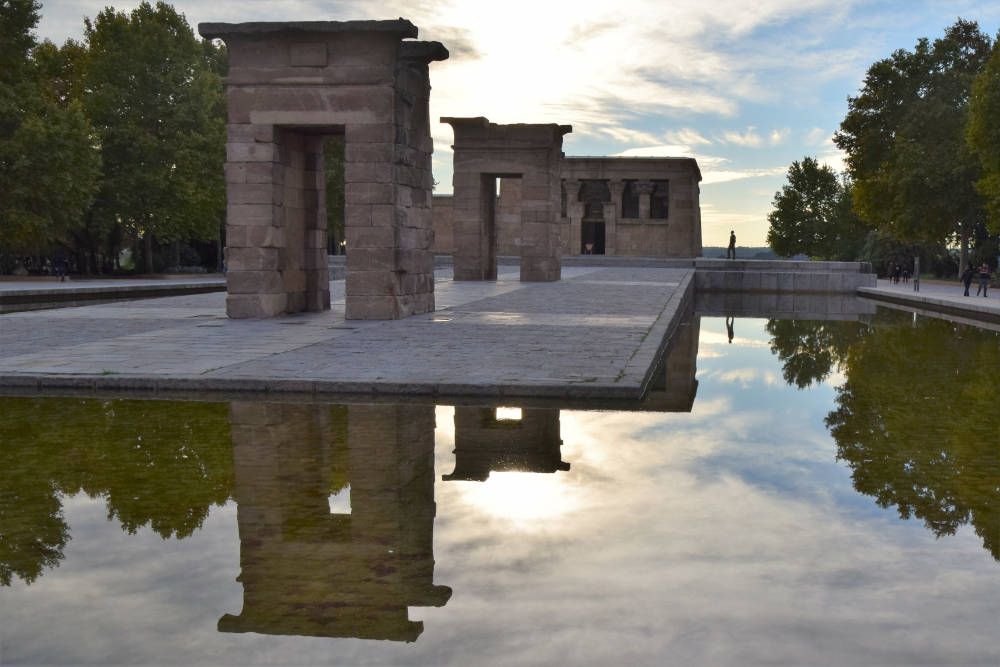
Museo del Prado
Those who love classical painting can delight themselves in the Prado Museum. This museum houses the largest collection of Spanish paintings from the 12th to the 19th century. There are also many paintings by Flemish masters.
All works of art are arranged according to the school. On the ground floor hang mainly the Flemish and Italian masters. The first floor consists almost exclusively of works from the Spanish school. If this art appeals to you, you can certainly spend a day in the beautiful neoclassical building. Don’t forget to visit the gardens around the museums. Here you will see many statues and pillars.
Centro de Arte Reina Sofia
This museum of modern 20th century art appealed to us more than the Prado. In a former hospital, with two glass elevators on the outside, you’ll find Pablo Picasso’s most famous work: Guernica depicts the air raid on the Basque city of Gernika-Lumo during the Spanish Civil War. For years, this painting was hung in New York. Picasso decided that it could only return to Spain after democracy had been restored there.
In addition to this work by Picasso, there are more paintings by this artist. There are also masterpieces by Salvador Dali and Miro. For lovers of modern art, the Reina Sofia museum is a real highlight of a city trip to Madrid.
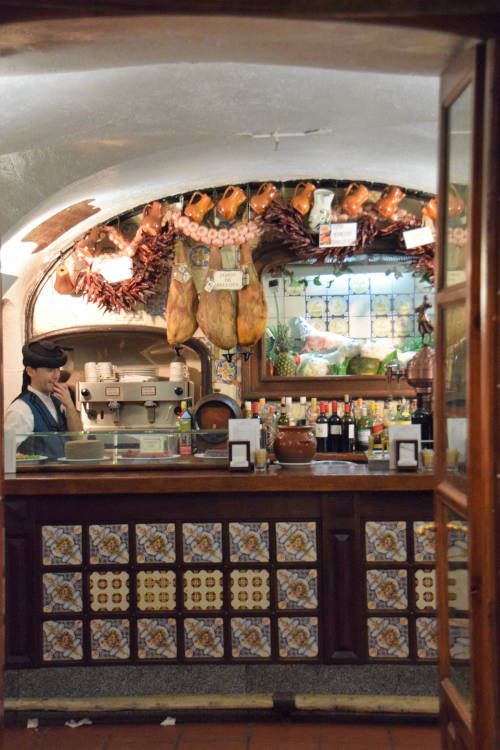
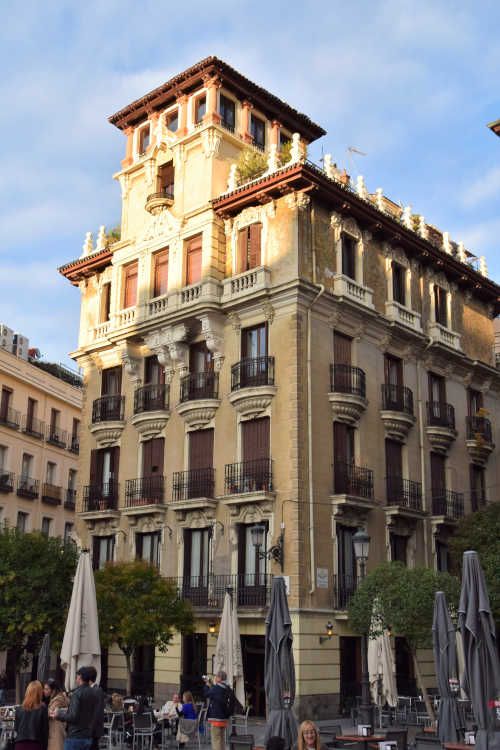
Strolling through the nicest districts in Madrid
In Madrid, you can stroll around through special neighbourhoods where you can enjoy nice shops and restaurants. The Lavapiés district is the domain of all kinds of nice restaurants with dishes from Asian cuisine. But of course, you will also find tapas bars.
The La Latina district has beautiful little streets from the Middle Ages. The locals sit here in the evenings and weekends on the street and thus creates a cosy atmosphere. It is teeming with small, intimate tapas bars.
Chueca is traditionally the district where the gay community is. This real working-class district has a lot of nice and special shops. Besides the numerous restaurants and bars, you will find many covered markets. Central to the district is the lively Plaza de Chueca.
The Malasaña district is the hippy district of Madrid. It seems as if time has stood still in the 80s here. The vintage lover will have a great time. You will find many small boutiques with clothes, shoes and all kinds of special accessories.
Lovers of expensive fashion brands and other lifestyle products go to Salamanca. It is one of the chicest districts in the city. The expensive clothing brands can all be found here. But cheap shops like Zara are also located here.
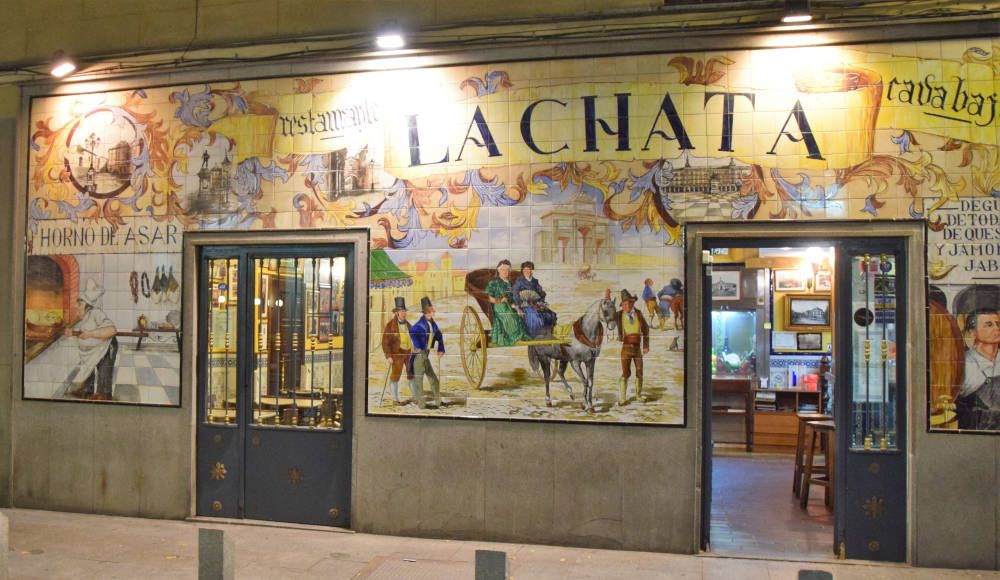
A bike ride through the city
We always enjoy getting to know the city on the first day of a city trip via guided tour. That is why we often do a free walking tour or a hop-on-hop-off bus ride. You see the highlights pass by, learn a lot about the city and you can immediately better orientate yourself in it.
In Madrid, we booked a bike tour with Baja Bikes. This Dutch company organises a tour in many cities around the world under the guidance of a Dutch-speaking guide. Madrid is a very bicycle friendly city, with more than 70 kilometres of cycle paths.
Baja Bikes has several themes for a bike ride through Madrid. The enthusiastic guide has a lot to tell and gives plenty of background information. In one morning, we learned a lot about the history, culture and highlights of the city. For us this was a perfect start to our city trip in Madrid!
If you’re visiting Madrid during busy periods and want to do a bike ride, we recommend you book this bike ride in Madrid online. You will then be guaranteed a place. There are no reservation fees in advance.
Practical matters
Transportation to Madrid
It is actually not feasible to go to Madrid from the Netherlands by car. The distance from Utrecht is no less than 1,750 kilometres. Of course, you can get a rental car from the airport for your city trip to Madrid.
However, most visitors choose to go by plane. In about 2.5 hours, you fly from Schiphol to the airport Adolfo Suárez Madrid-Barajas. The airport is around 12 kilometres from the city. At the airport you can rent a car if you wish to have optimal flexibility when visiting Madrid.
Travelling by train from the Netherlands to Madrid is often more expensive than travelling by plane and takes a lot of time. It is therefore not an option to travel this way.
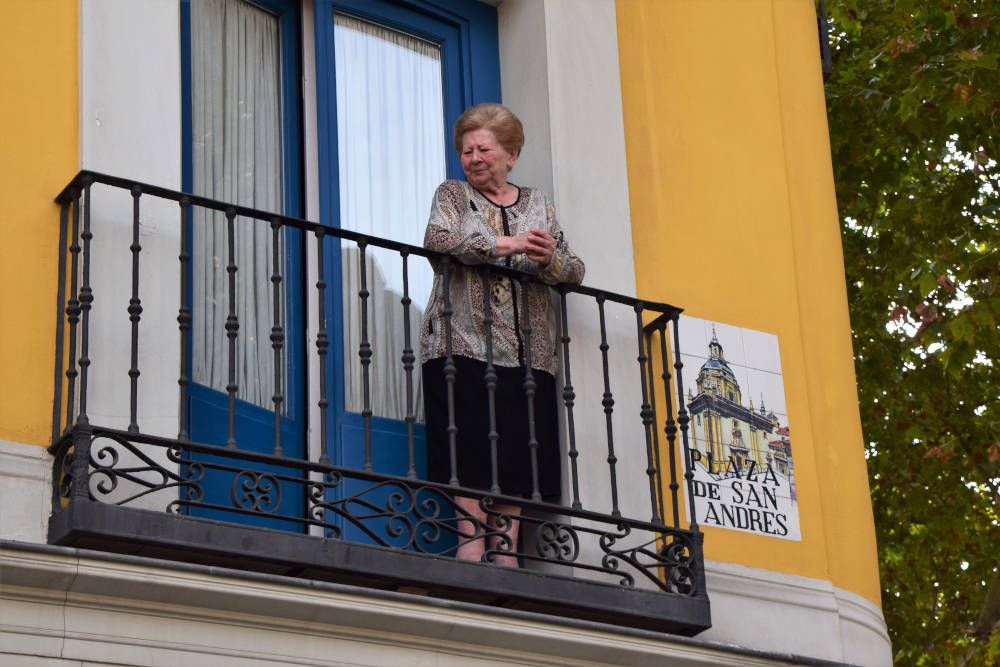
Staying in Madrid
Madrid has a lot of hotel accommodation in all price ranges. For an up-to-date overview, please visit Booking.com.
If you are travelling by motorhome and want to visit Madrid, there are a few campsites in the vicinity. With public transport you can be in the centre in 45 minutes to one hour.
A few years ago, we stayed in an apartment that we had booked via Airbnb. It was on Calle Mayor, just a few steps from Puerto del Sol and Plaza Mayor. We looked out onto Mercado de San Miguel. A prime location. Unfortunately, it is no longer on Airbnb. The landlord has another apartment in the immediate vicinity for rent. This has, instead of 2 separate bedrooms, a bedroom and a sofa bed. So, we have not been in his new apartment but the location here is also perfect.
Other topics you may be interested in
- City trip to Barcelona
- City trip to Bilbao and San Sebastian
- City trip to Malaga
- City trip to Valencia

